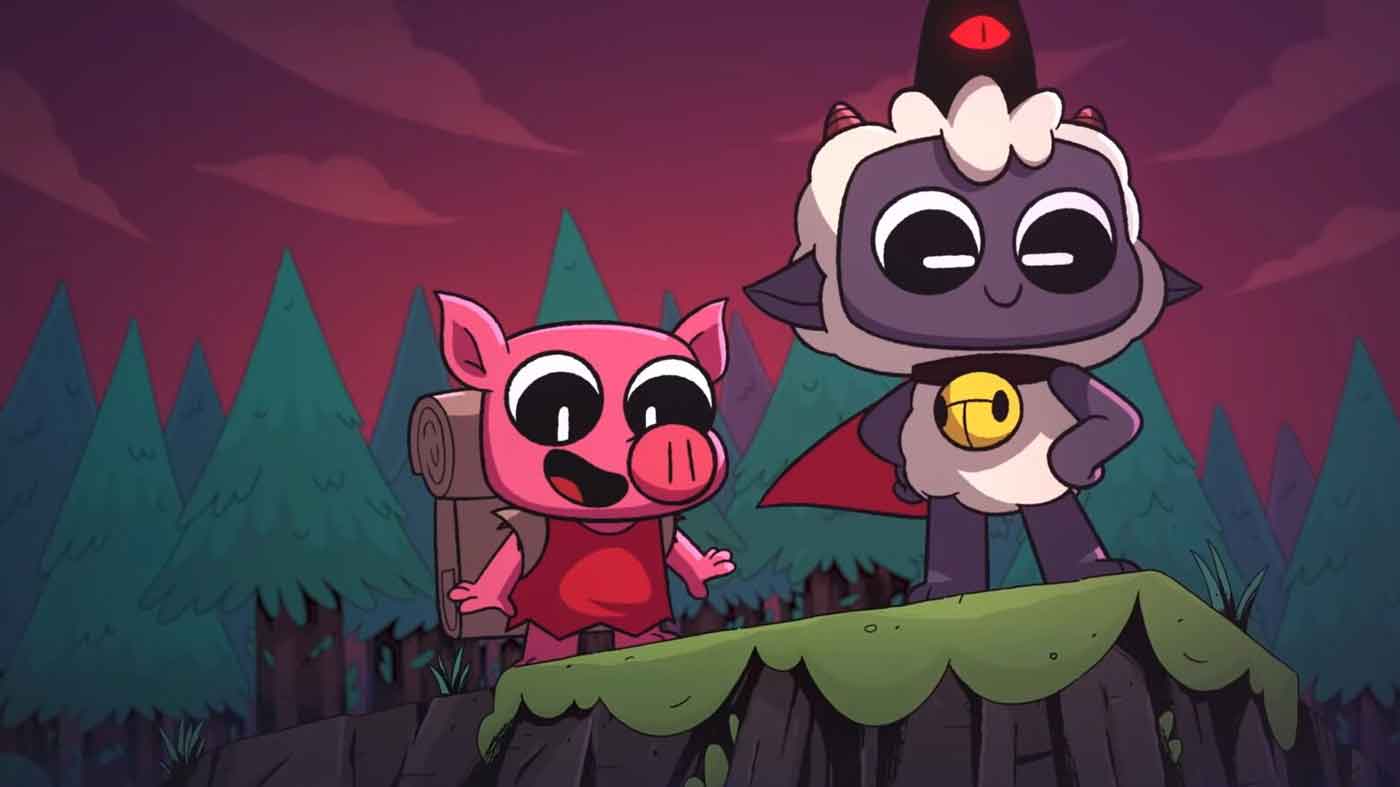Massive Monster’s Cult of the Lamb has all the makings to emerge as the Death’s Door of this year. It has an anthropomorphic animal lead and dynamite combat that, in a lot of ways, feels like an homage of sorts to a title of old. But Cult of the Lamb also feels like a game of two very distinct halves, and they’re halves that are exceptional individually but never seemed to complement each other throughout twelve wholly enjoyable hours of preaching and plying my trade as a false idol to an impressionable flock.
Cult of the Lamb casts you as the titular lamb, sacrificed by bishops of an old, ancient faith in an effort to thwart a tired prophecy that told of a woollen warrior that might overturn the status quo and free the grim spectre known as “The One Who Waits” from his exile. In exchange for a second chance at life, you must build a cult in his name and crusade against countless eldritch nightmares and rival cults. Cult of the Lamb divides your time pretty much straight down the middle between crawling through dank dungeons and tending to your twisted settlement, which really is like a cute Animal Crossing village plagued by shit, sickness, and ritual sacrifice.
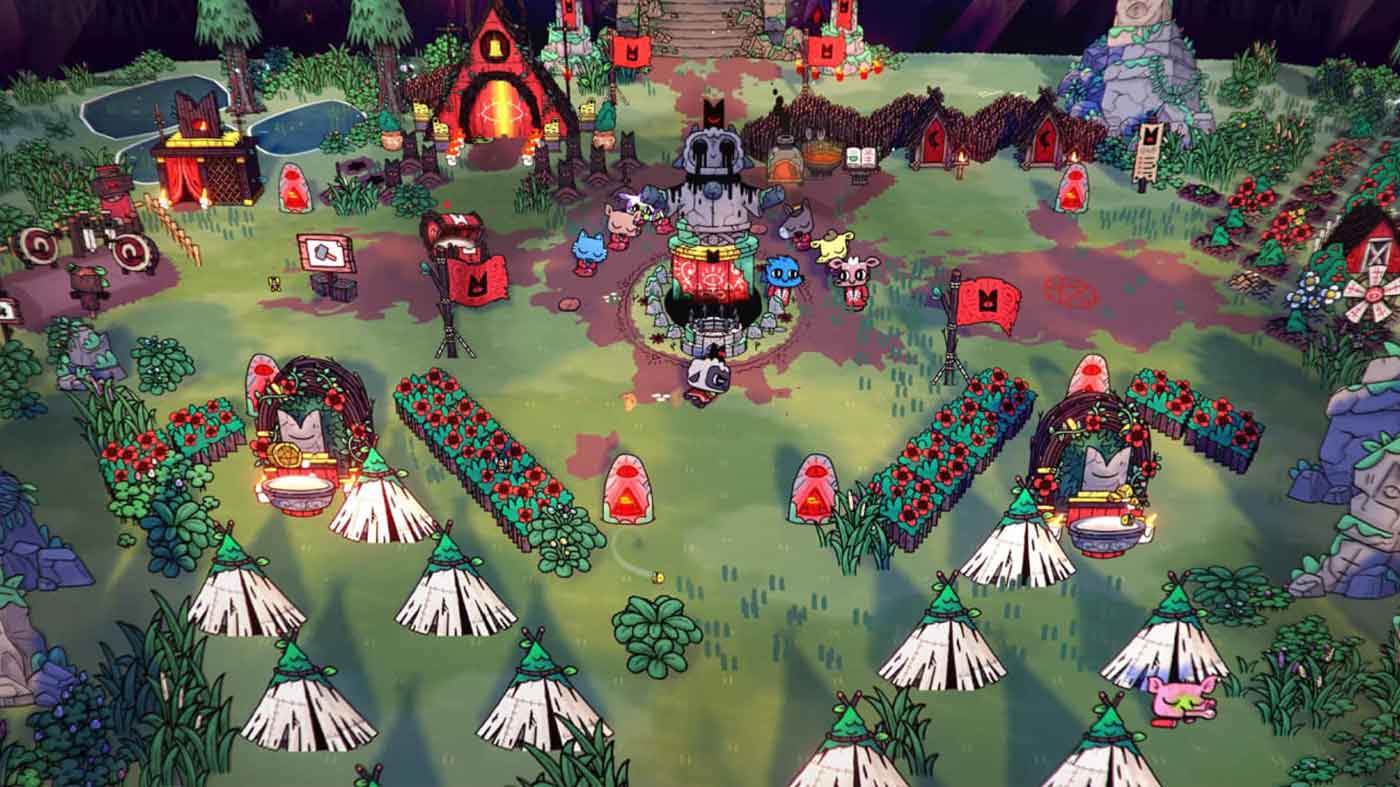
I’m not one to gravitate toward the micromanagement of erecting a settlement and pandering to the every need of your devoted followers, but Cult of the Lamb keeps things engaging and chugging forward by tying everything under together under the guise of a Midsommar-like murder cult full of woodland critters. With the flock at your disposal, often monotonous busywork, like gardening and custodial services, can be streamlined through delegation, leaving you to focus on the more enjoyable things on offer.
Whether you’re putting the finishing touches on your temple, or declaring doctrines to help you further exploit the cult’s devotees, Cult of the Lamb’s upgrade paths and economies are all accessible and straightforward—though they’re all driven by maintaining the faith of your flock. If their belief in you wavers, it could be a bit of a slog to see all of the game’s more imaginative rituals—which range from Pagan bonfires and group psychedelic trips to marriage and a barbaric bloodsport that sees followers battle to the death—unless you’re a merciful idol.
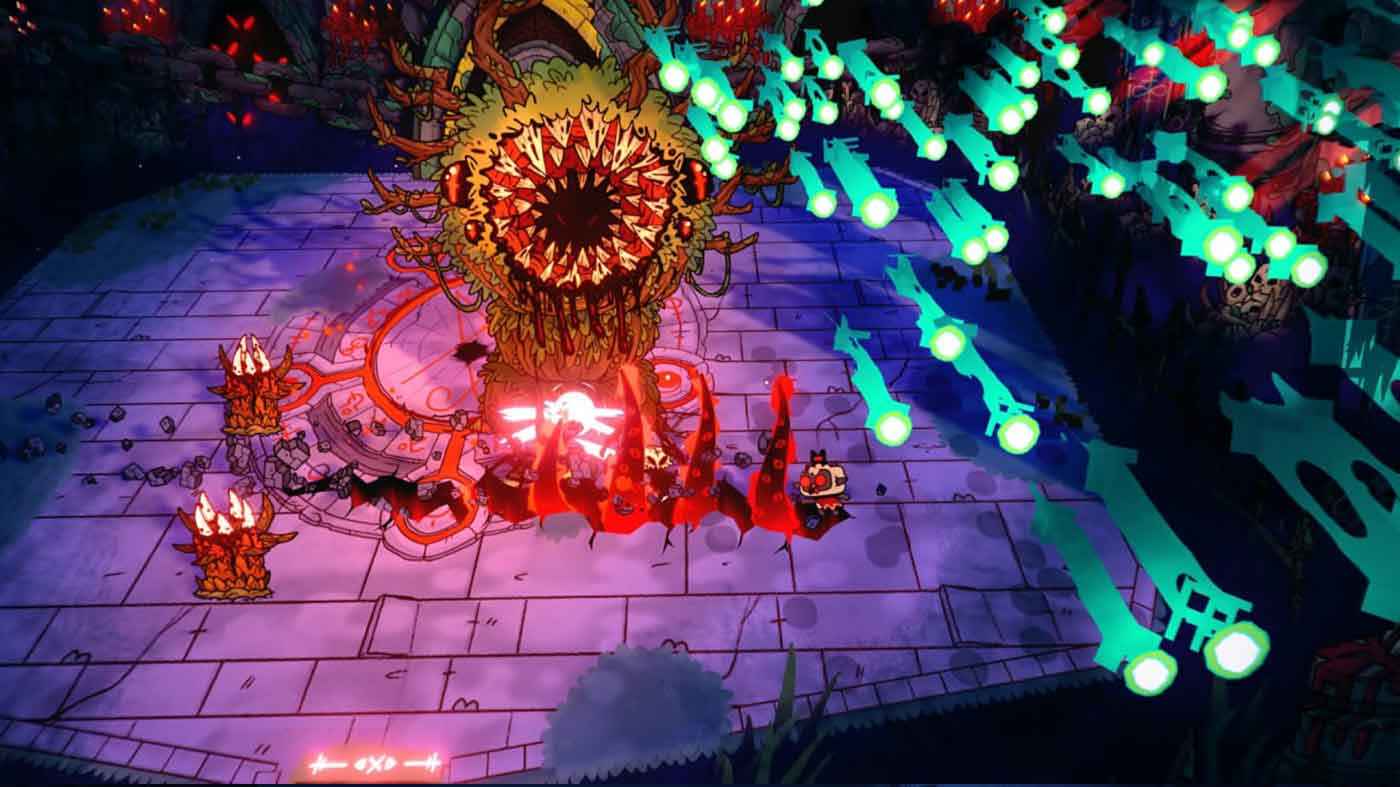
Your gathered resources aside, managing your flock and the moral decisions made don’t ever really seem to have an impact on your holy crusade. It really does, at times, feel like two separate games.
Not only does Cult of the Lamb borrow its cutesy juxtaposition of sweet and savagery from The Binding of Isaac, much of its roguelike combat feels inspired by it too. While Binding of Isaac is for all intents and purposes a shooter, Cult of the Lamb feels more like Death’s Door or Hollow Knight, opting for an up close and personal brand of combat that emphasises timing and dodging. It’s tight and well-crafted, it’s hard to fault the game’s grittier portion. Similar to Inscryption, you carve out a path through four or five levels, opting for either physical challenges or levels that might offer a cache of resources or even a would-be follower in need of rescuing.
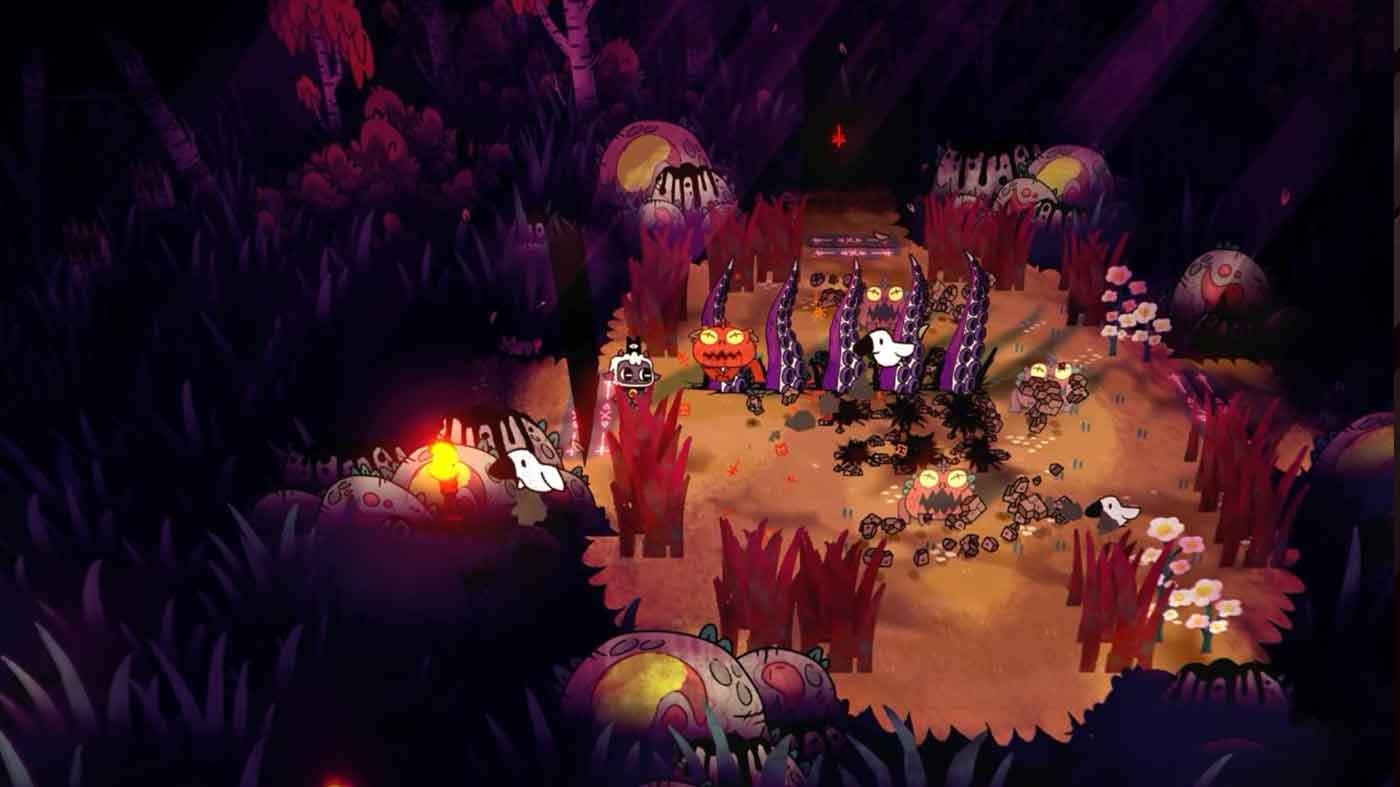
Each crusade begins with a random weapon and curse—a supernatural secondary fire that often deals area of effect damage. Throughout a run you’ll pick up tarot cards that buff your lamb’s powers, which further emphasises the game’s roguelike prowess and keeps each crusade feeling relatively fresh. Cult of the Lamb has four distinct areas, each with its own theme, safeguarded by a pious bishop. Before you meet them, you’ll need to run any given area four times and leave all heretics in your wake.
The side content is ultimately limited by the game’s indie sensibilities. With only a couple of worthwhile extracurricular activities in fishing and Knucklebones—a surprisingly riveting game of chance—it doesn’t always seem worthwhile veering from the main path to venture out and spelunk Midas’ golden caves or trudge through the mushroom grotto. With plenty to unlock, including gaudy decorations for your village and wearable fleeces that toggle modifiers, the game does a fine job to encourage replayability. My village is full of flower arches, all that’s missing is Florence Pugh’s triumphant grin in the face of death.
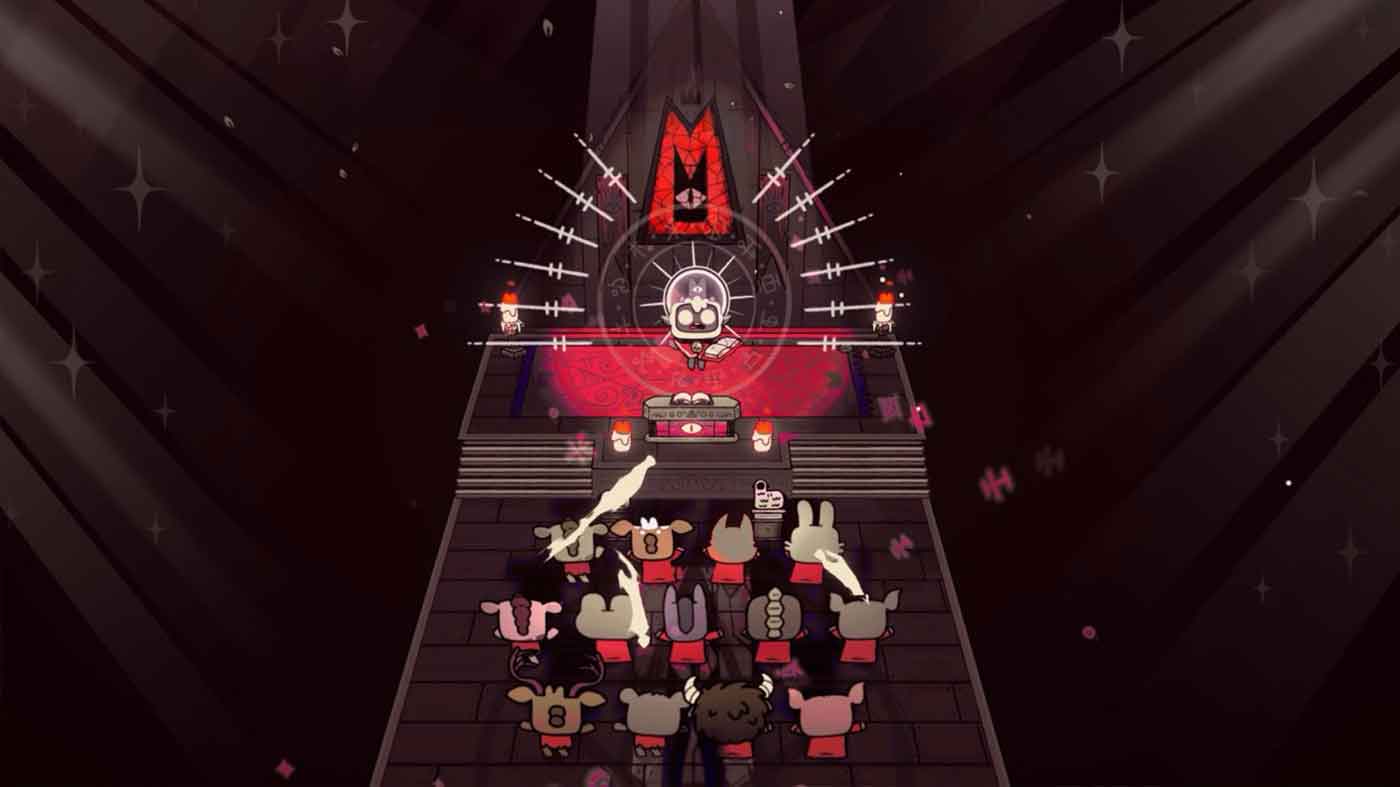
Cult of the Lamb’s art direction is certainly one of its great triumphs. It’s so bright and exuberant, delivering the same blinding brand of daylight horror as seen in Ari Aster’s subversive film. Of course, it’s even more disarming to see a cute bunny sacrificed to the gods, but that’s what is so clever and memorable about Cult of the Lamb. The game’s world is presented almost like a pop-up book, it really is a sickly sweet diorama of hand-crafted critters. While it can be ethereal and moody when required, River Boy’s score can be a bit of a bop.
The theme for “Knucklebones” is an earworm. Despite there only being four adversaries, I couldn’t help returning from time to time to toss them bones and jam along to a tune that’s Darren Korb-like—which I feel is decent praise given his body of work.
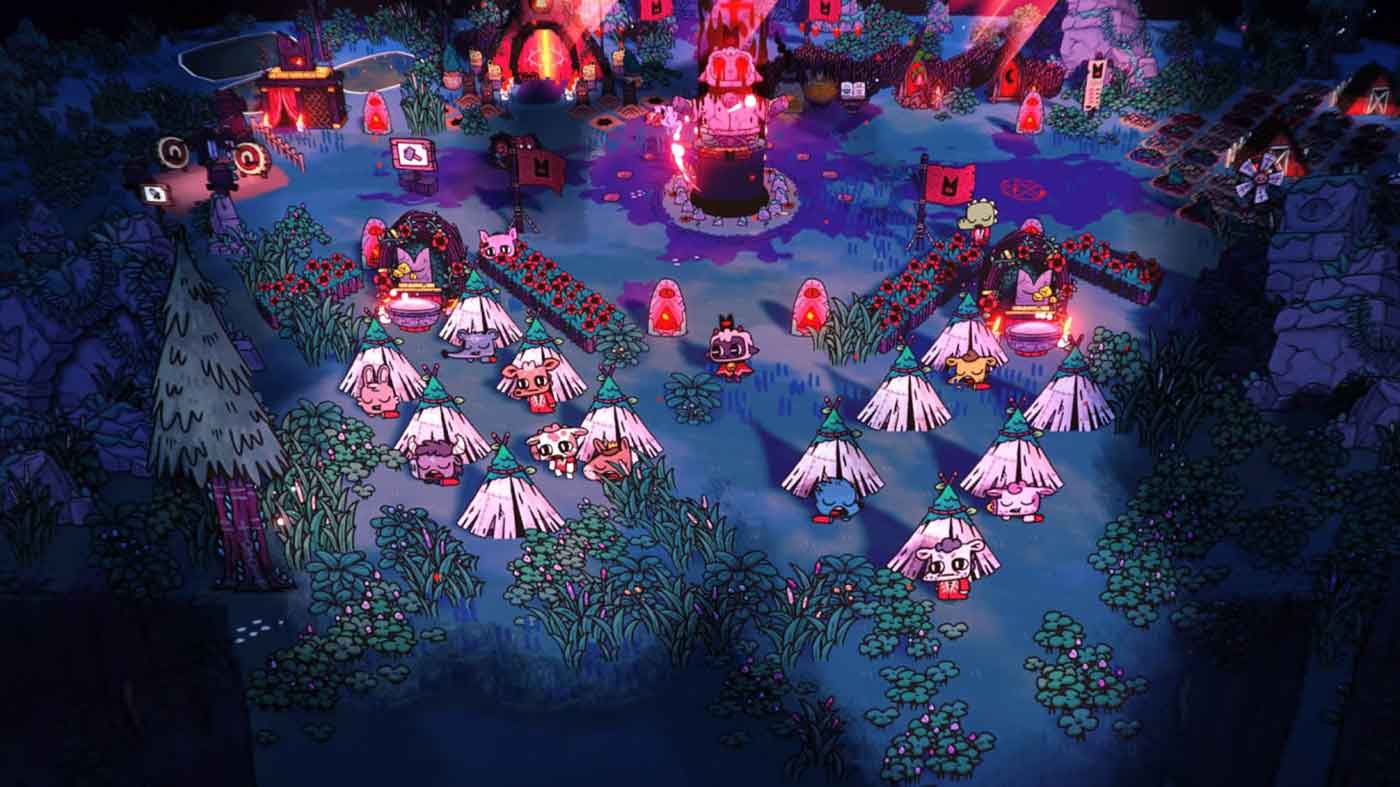
Ultimately, I think Cult of the Lamb is a great example of flipping the power fantasy concept on its head, framing that thrilling pursuit of all-conquering omnipotence through the eyes of a once-hapless lamb is a stroke of genius. The dissonance I felt between its colony simulation and dungeon-crawling halves is unfortunate, though it doesn’t keep said halves from being brilliant in their own right. You’re getting an exceptional roguelike hack-and-slasher and an adorably dark and dramatic settlement-builder that will test your moral compass more than once.



